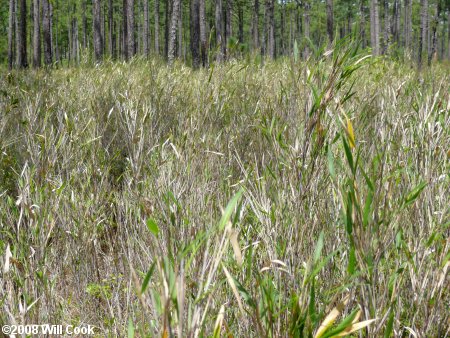
| This colonial woody grass is common in moist bottomlands in the forest understory. Pender Co., NC 4/19/08.
| 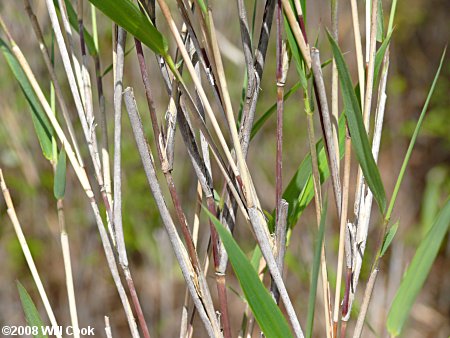
| Pender Co., NC 4/19/08.
| 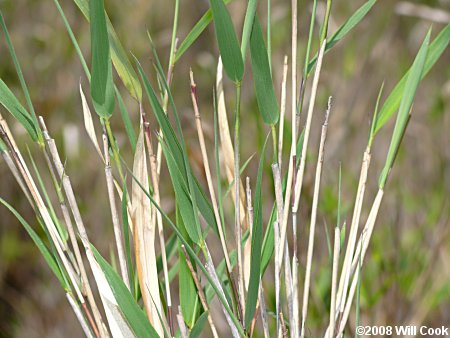
| Pender Co., NC 4/19/08.
|
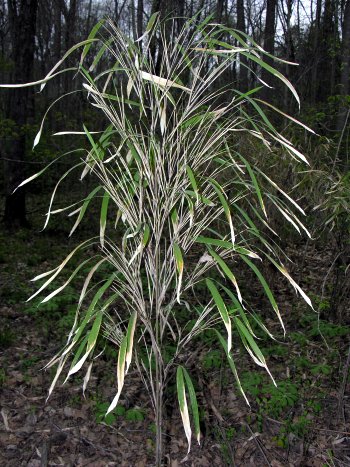
| One of three native bamboo species, Switch Cane is difficult to separate from the larger Giant Cane (A. gigantea), with which it is sometimes lumped. Switch Cane is generally less than 2 meters tall, while Giant Cane can reach 7 meters or more. A third species, the recently described Hill Cane (Arundinaria appalachiana), is of short stature and generally grows in drier slopes of the southwestern corner of NC. All species can form extensive dense stands, known as canebrakes, which are used for cover by wildlife, such as the Canebrake Rattlesnake. Durham Co., NC 4/1/07.
| 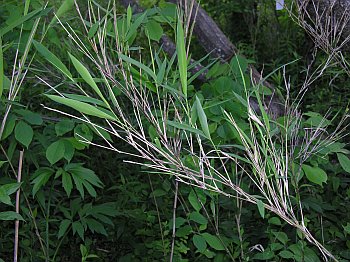
| Cane is the host plant for several uncommon butterfly species: Southern Pearly Eye, Creole Pearly Eye, Lace-winged Roadside-Skipper,
Reversed Roadside-Skipper, and
Carolina Roadside-Skipper. Macon Co., NC 5/12/06.
| 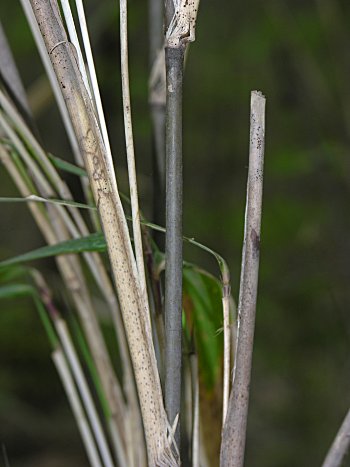
| Stem detail. Unlike Giant Cane, the stems are too thin and delicate to be used for fishing poles. Durham Co., NC 4/1/07.
|
More information:
Oklahoma Biological Survey
Recommended Tree, Shrub, and Woody Vine Identification Guides
|
|





